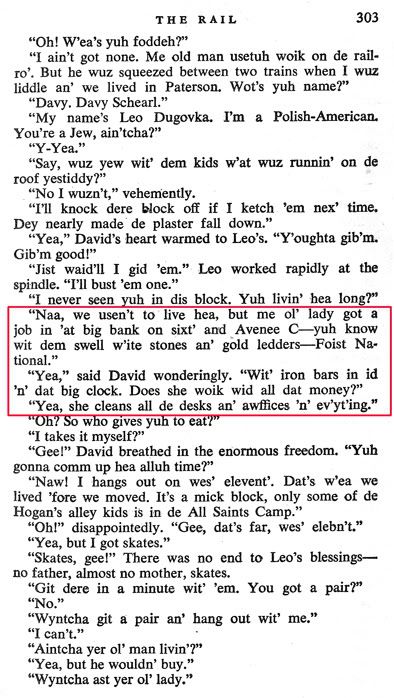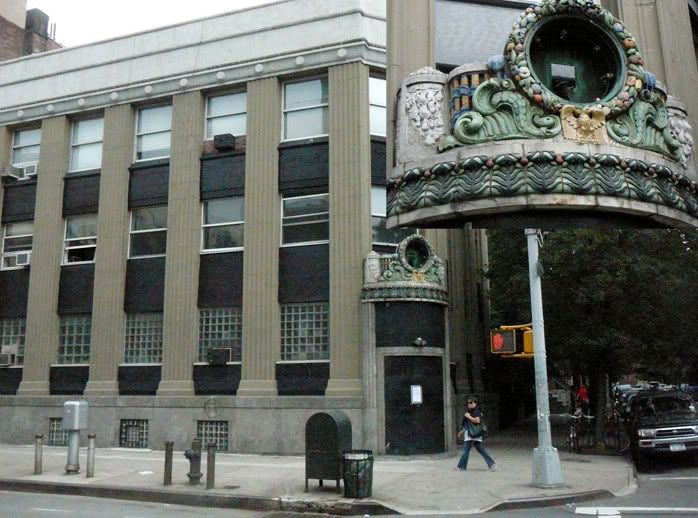
In Call It Sleep Davy meets Leo whose mother works in the Public National Bank on 7th Street and Avenue C

The Public National Bank of New York Building in the East Village is a highly unusual American structure displaying the direct influence of the early-twentieth century modernism of eminent Viennese architect/designer Josef Hoffmann. Built in 1923, the bank was designed by Eugene Schoen (1880-1957), an architect born in New York City of Hungarian Jewish descent, who graduated from Columbia University in 1902, and soon after traveled to Europe, meeting Otto Wagner and Hoffmann in Vienna.
Although little remembered today other than as a furniture designer (whose objects are highly sought by collectors), Schoen was for the first half of the twentieth century in the forefront of modern American design, a revered contemporary of many well-known colleagues. He practiced architecture primarily from 1904 until 1925, when he was said to have been inspired to become largely an interior designer after attending the international exposition in Paris, opening his own New York gallery. The New York Times at his death stated that “Schoen was regarded as one of the leading exponents of modern architecture and design and as such helped to develop the movement here.”
This was one of the many branch banks that Schoen designed between 1921 and 1930 for the Public National Bank of New York (Public National Bank & Trust Co. of New York after 1927), which had its headquarters on the Lower East Side. Originally two stories, the structure had a monumental ground-story banking floor and upstairs offices. Clad in light grey granitex (having the color and texture of grey granite) terra cotta (recently painted) above a polished grey granite base, it was designed with an angled corner bay with the entrance, flat capital-less fluted pilasters, and a broad, highly stylized molded cornice with a lower band with bosses, the latter features direct references to Hoffmann’s work.
The entrance is surmounted by notable polychrome Viennese-inspired terracotta ornament in the form of a decorative band above which is a cartouche with a wreath of fruit (which originally held a clock) above an eagle, flanked by curvilinear forms and decorative urns. The building’s terra cotta was manufactured by the New York Architectural Terra Cotta Co. Sold in 1954, the building was converted into a nursing home, with the addition of an intermediate floor, and into apartments in the 1980s.


























No comments:
Post a Comment